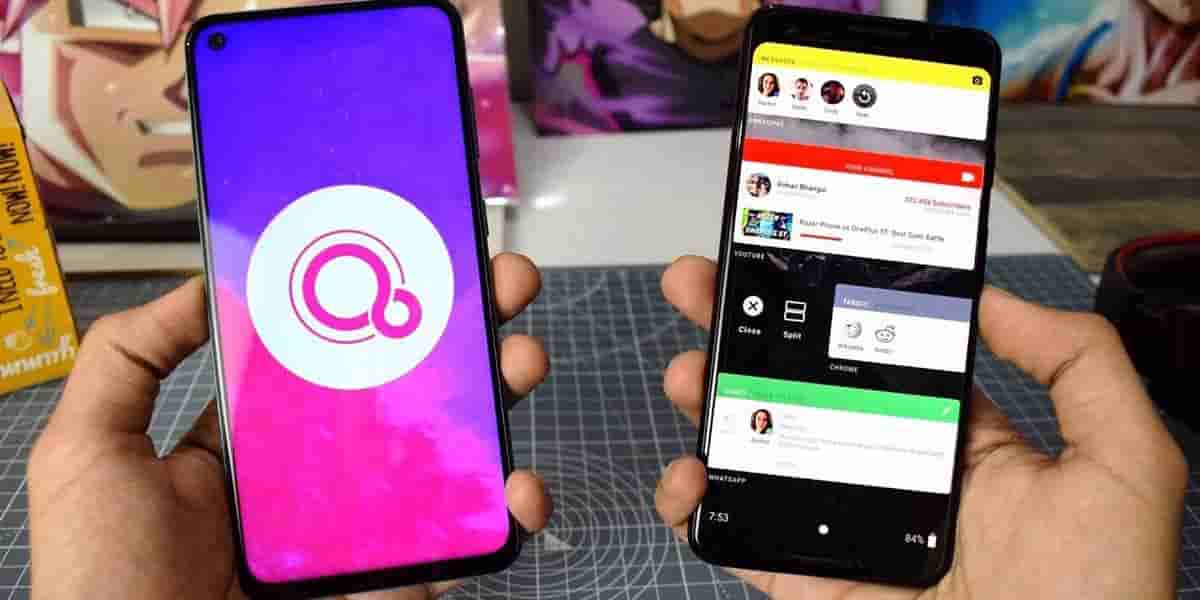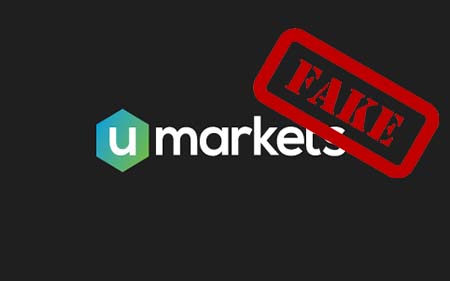Fuchsia OS - we analyze what the new OS from Google can do. Spoiler: in 2023, Samsung may replace Android with it
By The Forex Review - 26 / January / 22 1225 Dominick Bell
Dominick Bell
In May 2021, it was reported that the leadership of the South Korean corporation Samsung was thinking about abandoning Android in their mobile devices in favor of Fuchsia OS. Six months later, analyst Do Hyun Kim said the same thing. Let's figure out what FuchsiaOS is, what are its differences from Android and whether it is able to replace the most popular OS in the world.
Fuchsia OS Features
She will be able to make playlists for you in the mood, suggest where to go tonight, based on your schedule and discussions in the mail. She will offer you to buy tickets, knowing that you have planned to fly to Madrid in two days. All the necessary technologies will be embedded in the operating system itself.
Just imagine: you open a browser, go to the website of one of the restaurants, then add an event to your calendar and say, "Okay, Google, invite Alexandra to dinner." And Google Assistant understands what it's about. He finds a calendar event in the list of programs, makes a note and sends Alexandra a message with an invitation to such and such a restaurant at such and such a time.
Like any modern operating system, Fuchsia relies on cloud technologies and artificial intelligence in its work, but goes much further than other operating systems.
In Fuchsia, the cloud will become not just a place for data backup, it will turn into a link for all user information.
Imagine that you are sitting with a laptop, typing text on the keyboard and simultaneously communicating with someone in a messenger to your favorite music. Suddenly the boss calls, you take off with one phone, run to solve work cases. And then unlock it and see all the same running programs in which you worked on your laptop before: editor, messenger and music player. Convenient, isn't it?
The system has synchronized your devices and even installed a text editor on the phone – the minimum part necessary for basic work with text - after all, the channel is not rubber, and it is unclear whether the entire interface on the phone will be needed. Even the contents of the clipboard and the location of open windows have been preserved.
Everything connected with the clouds in Fuchsia is run by Ledger, a distributed storage that acts as the "second memory" of the device. Everything is duplicated there: application data, applications themselves (or rather, components), documents, settings, stories, your photos with the sun in your hands. This is not an analogue of Google Drive or iCloud, it is an analogue of the second hard drive in the raid array. At the same time, it is not mandatory to use at all.
Ledger is a modular system. By default, it is based on Google's Firestore network storage, but smartphone manufacturers will be able to convert it to their own cloud storage. The Ledger option, which uses your home server as storage, is not excluded.
Modularity and scalability of Fuchsia OS
Starting from the most basic levels and ending with user-visible elements, Fuchsia components are maximally isolated and logically separated from each other. Fuchsia is based on the Zircon microkernel, which provides the ability to manage memory, create and destroy processes, and also acts as a multiplexer for drivers, file systems and network stack, which are not part of the kernel, but, as befits microkernels, run in separate processes.
Zircon is the first layer of a pie called Fuchsia. Above it is Garnet, a layer that provides the ability to launch applications. This includes drivers, libraries, Escher graphics renderer, Amber update system, package manager and Guest virtualization system, which allows, for example, to run a Linux environment inside Fuchsia.
The next level of Peridot is where the components work. In Fuchsia, a component is something like an executable piece of code that will be visible to the application user in the future (here they are called modules). Components are very different from executable files in other operating systems: they are always isolated in their own sandbox and can communicate with the outside world exclusively using a special IPC mechanism based on the FIDL language.
Thanks to the unified IPC system, it absolutely does not matter in which language the individual components are written. Fuchsia supports Dart, Go, Rust, Swift, Java and JavaScript, all of these languages can communicate through a single interface. Fuchsia's philosophy is to make the components as compact as possible. For example, a player may consist of many components written in different languages that work as a whole.
All components are packaged in packages that can be synchronized or downloaded on demand using Ledger. A package in Fuchsia can be not only a component or a set of components, but anything at all. In the manner of modern Fuchsia distributions, everything consists of packages, starting from the loader and ending with the configuration file of the video driver.
The modular design will allow Google to avoid the hell it got into with Android. Now the manufacturer will not need to update the entire OS in order to fix a bug in the multimedia decoder or update the driver. Next, let's talk about the visual component of the operating system interface.
Fuchsia OS Interface
Speaking of Fuchsia, it is impossible not to mention another very interesting feature - Material Design.
The beauty of this design lies in the extensive use of the idea of layers and shadows. The Material Design-style interface is not just stacks of graphic elements with a black outline under them, but a complex composition with many levels and several light sources that give different shadows.
In Android and in web applications, this whole complex scene is simply emulated, but in Fuchsia it is real!
The Sceniac engine, which is used to draw the OS interface– is a 3D engine. He builds a real 3D scene, positions the interface elements and light sources at the right angles, and then uses a virtual camera to make a 2D picture out of it all.
Another reason for using Scenic is the focus on using Fuchsia as an OS for virtual reality systems that require the creation of different images from different angles to achieve the effect of depth.
An interesting feature of the new operating system is the ability to work in multi-window mode. Judging by the available information, the screen can be divided not only into two parts, as it is now done in Android Nougat, but also in any other ratio convenient to you. Thus, Fuchsia OS will most likely be perfectly adapted for use on tablets and even laptops.
Multi-window mode, the so-called freeform-window layout mode, is familiar to us on Windows, OS X or Linux. The interface is designed for many different devices with different screen sizes, so the window management is organized in a completely different way. You can open the application (or rather, the module) to the full screen, you can add another module to it by dividing the screen, or, conversely, stack the modules on top of each other in the manner of tabs in the browser.
Each module in Fuchsia is provided with information about what function it performs and, as a result, what types of entities it can be associated with. The OS actively uses this information to save the user from having to deal with applications.
Let's say a friend shares an e–book Fuchsia OS with you - we analyze what the new OS from Google can do. Spoiler: In 2023, Samsung may replace Android with it. Fuchsia automatically finds this book on the web, downloads a module for viewing/ buying it and shows it to the user. At the same time, the module itself can be as simple as possible, and a full-fledged application can be downloaded as needed.
Who is responsible for the development of Fuchsia OS
Google has been working on the Fuchsia OS operating system since 2016. It is an open source OS designed for a wide range of devices. The first product with Fuchsia OS was the Nest Hub intelligent display of the first generation.
In 2018, Bloomberg reported that in five years, a new OS could replace Android, Pear OS and Chrome OS. In 2019, Google representatives confirmed that smart home devices were just the starting point for a new platform. Some time ago, Samsung began to contribute to the development of the OS. In addition, a few months ago, Google created the Fuchsia Devices team and began preparing to migrate the operating system to non-Google devices.
The project is in the hands of two veterans of the world of operating systems - Brian Sweetland and Travis Geiselbrecht. Both were once involved in the development of BeOS at Be Inc. Then Sweetland worked on setting up Danger Hiptop OS and participated in the creation of the startup Android Inc, which was absorbed by Google.
Geiselbrecht, after working on Hiptop OS, moved to Apple and began developing new features for iOS, then worked on webOS in Palm OS and was one of the leading figures in the creation of Jawbone Embedded.
Travis Geiselbrecht (first from the left in the top photo) is a developer of mobile operating systems such as BeOS, iOS, Web OS. Travis' latest brainchild is Haiku OS, a free Unix-like open source operating system compatible with BeOS, which has been discontinued. The development of Haiku OS began in 2001, and in 2008 the operating system became independent. The first release was in September 2009. The first beta version was released in September 2018, and beta version 3 was released in July 2021. He is currently working on the Fuchsia OS project at Google
The Android mobile operating system has dominated the smartphone market for several years now. Android owns 70.74% of the market, while iOS occupies 28.5%. Timid attempts by other manufacturers to change the situation, like Samsung's Tizen OS, did not have much impact on the industry. It may well be that Fuchsia OS will soon compete with Android.
The Future of Android
If everything is so great with Fuchsia, then what awaits the green robot? This question is answered by the head of Android Hiroshi Lockheimer.
"Fuchsia OS may well capture part of the Android gadget market. The system is being developed, among other things, for smart home devices and wearable electronics, as well as virtual and augmented reality systems. Back in 2017, FuchsiaOS, which was at the initial stage of development at that time, got a shell very similar to the Android interface. The graphical component of FuchsiaOS was codenamed Armadillo, and it was created using the cross-platform toolkit of Google Flutter SDK developers. Flutter SDK applications are written in Dart, and they are designed for high device performance and support for 120 FPS frame rate," says Hiroshi Lockheimer.
In January 2019, it also became known about Fuchsia's ability to run applications written for Android, as evidenced by the changes made to the Android Open Source Project repositories. To do this, Google has integrated a specialized version of the Android Runtime runtime, also known as ART, into its new brainchild, which comes as a single file with the extension.far. In fact, it is an analog of APK executable files for Android.
In fact, Android is an open project. Google is actively involved in its development, but may withdraw from this case. The system is unlikely to be forgotten, since there is a whole cohort of manufacturers from China who work on such an open source Android. It is quite possible that they will continue to develop this system.
Chrome OS is also under threat
Chrome OS, another operating system, can also run Android applications,
which Fuchsia OS, according to Hiroshi Lockheimer, will not harm in any way. Meanwhile, in January 2018, Fuchsia managed to be installed on Google's proprietary chromebook - Pixelbook, initially functioning on the basis of Chrome OS. At that time, there was no talk of a full-fledged replacement of one OS with another - to launch Fuchsia on Pixelbook, a free QEMU emulator was required, but in this mode the OS worked exclusively in command line mode.
Okay, so what about Samsung?
Two sources immediately reported that Samsung is starting to work with this operating system. According to experts, the Korean corporation is actively exploring the possibilities of the new operating system and considers it as a full or partial alternative to Android on its devices.
In general, Fuchsia is suitable for both phones and other devices, including smartwatches or even televisions. It is no less versatile than the Android OS, and is distributed under a much softer license than Android.
At the same time, Samsung developers are part of the Fuchsia project team – the corporation has repeatedly offered its commits, which were eventually approved.
Samsung has added quite a lot of developments to the project, including snippets for F2FS. This is a file system developed by Samsung and used in the company's new smartphones.
According to insiders, Samsung will gradually switch from one operating system to another. If there are no problems with such migration, then the transition may eventually be complete. But, of course, it is difficult to predict anything at this stage, so we are waiting for developments.
But if a company of this scale does switch to a new operating system, this may be the beginning of a "redistribution of spheres of influence" of operating systems. Initially, few people believed in Android either, but in the end, from almost a home project, this OS became the dominant player in the market.
The purpose of the new project
Fuchsia is designed to replace Android and Chrome OS in the future. This is the most obvious assumption. But it is likely that the idea is much simpler – to create a new system that will be suitable for computers, smartphones and more tiny devices for which Android is too clumsy.
Perhaps one of these devices on Fuchsia OS will be the Pixel Watch? The new device is mentioned in the code of one of the company's proprietary applications. The leak confirms the name of the novelty. In addition, the code says that the gadget will be able to recognize user commands without an Internet connection. That is, the built-in Google Assistant will handle everything directly on the device. The Pixel Watch will most likely work under the control of the Exynos chip, although previous leaks said that the novelty will receive a proprietary SoC Tensor.
The watch is promised a classic design, a round AMOLED display, several control buttons and a new Wear OS operating system. The gadget will have a set of functions for tracking activity and health indicators and autonomy for about one day. The release of the watch is scheduled for the first half of 2022.
Summing up all the information, we can safely predict that a new operating system from Google will appear in 2023. The transition will be smooth and gradual, taking into account the wishes of users. And the first company that besides Google will release a device with FuchsiaOS on board, most likely, will be Samsung.
For your safety, we have compiled a blacklist of brokers.







